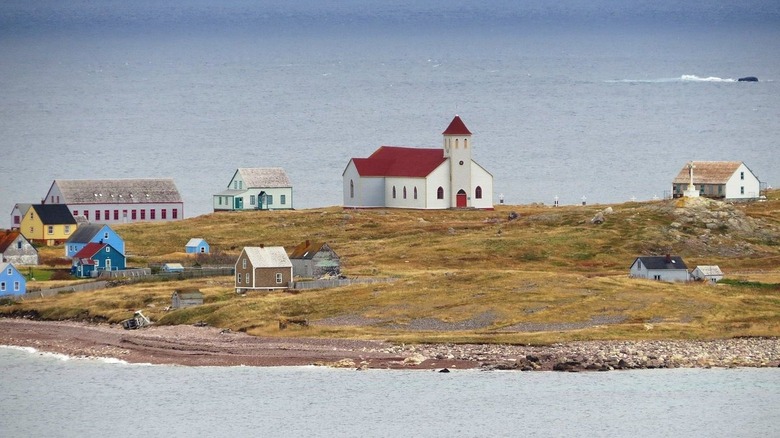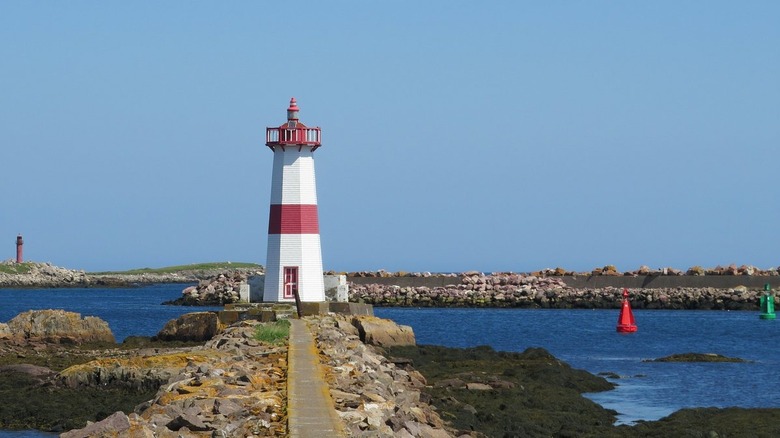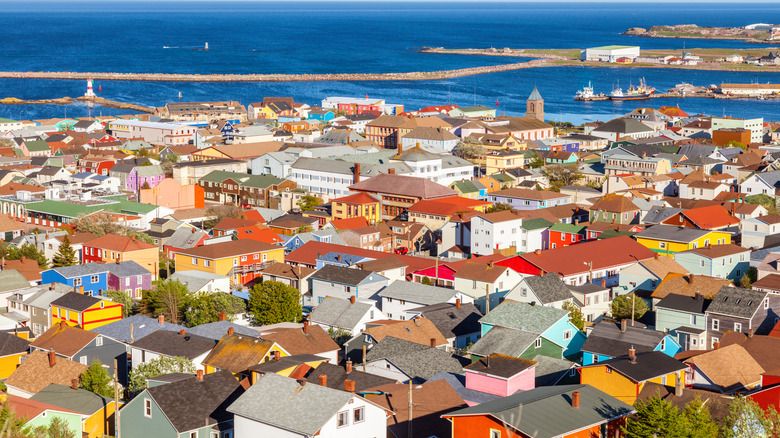If you’ve figured out the best time to visit France on a budget but are intimidated by the long transatlantic overnight flight, hefty costs, and all the jet lag, it turns out that you could get to France in as little as 45 minutes from St. John’s International Airport. That’s because there is a piece of French territory just off the coast of Newfoundland, Canada, and it is one of the last remaining holdovers from the French conquest of Canada dating back to colonial times. Named Saint Pierre and Miquelon, this small French island is technically under the European Union’s banner, meaning you will need a passport to get there. You’ll also need Euros and a power adaptor, and yes, they speak French there. Vive la France!
However, if you expect the island to be full of French iconography (baguettes, mimes, and berets), you might be pleasantly surprised. Saint Pierre and Miquelon takes most of its cultural cues from its closest French-speaking community — Quebec, which is the French-speaking province of Canada! So instead of baguettes, it’s poutine, and instead of a Parisian accent, the French spoken on the island is most certainly more Quebecois! Here’s everything you need to know about visiting this North American French territory.
France retained the island in a 1763 treaty

Management / Tripadvisor
You might be wondering how the French managed to snag territory in North America. According to a 2003 research published in Acadiensis, it all dates back to 1763, when Canada was still a territory claimed by Britain and France. The two empires signed a treaty where France was compensated for the loss of New France and was given the Saint Pierre and Miquelon archipelago on the condition it was not militarized but rather used merely for fishing.
That’s fitting because Saint Pierre, or Saint Peter in English, is the patron saint of fishing, so all things having to do with fisheries, boating, and the water are a significant cultural draw for the island. However, the island is tiny, with only about 6,000 residents, per Adventure Canada, and its culture is much more reminiscent of Canadian culture than the European giant. The island sought to end its border control between itself and Newfoundland in 2021 because the two are separated by merely 16 miles.
Seals and humpback whales are regular sights off the coast of the island, and wild horses are on the land, so you might think you’re on Vancouver Island rather than France! However, you will definitely feel the French culture when you visit the boulangeries and patisseries (aka bakeries and pastry shops), where you can find croissants, pain au chocolat, and all the things you’d expect to find in a Parisian bakery.
Direct flights and attractions

Management / Tripadvisor
Despite the huge Canadian influence, tourism executive Chris Sheppard, based in Newfoundland, told CBC News that Saint Pierre and Miquelon have some very European hallmarks. “Cobblestone streets, fantastic restaurants, bakeries of course, wine, shopping … the shops are selling ingredients that we don’t get here in Newfoundland because they’re imported from mainland France,” he stated.
With that in mind, imagine getting to France’s cobblestoned streets in just 45 minutes. If you hop on a flight from St. Johns, Newfoundland, you can. There are also direct flights from Montreal, Quebec, lasting only 3 hours and 15 minutes, and let’s not forget that Montreal is only 40 miles from the USA border, so getting there from the States is a cinch. If you’re already in Paris, there are even direct flights from the City of Lights to Saint Pierre and Miquelon, lasting around five hours.
Once there, you will be dazzled by the vibrant, colorful rows of wooden houses that pepper the small island, some dating back to the 19th century. There’s also a cultural museum, the Île aux Marins’ Archipelitude Museum, which demonstrates the traditions and customs of the islanders. Check out the Heritage Museum, where you can learn all about the bootlegging boon during Prohibition in the ’20s and ’30s when notorious gangster Al Capone came to the island to set up operations.

